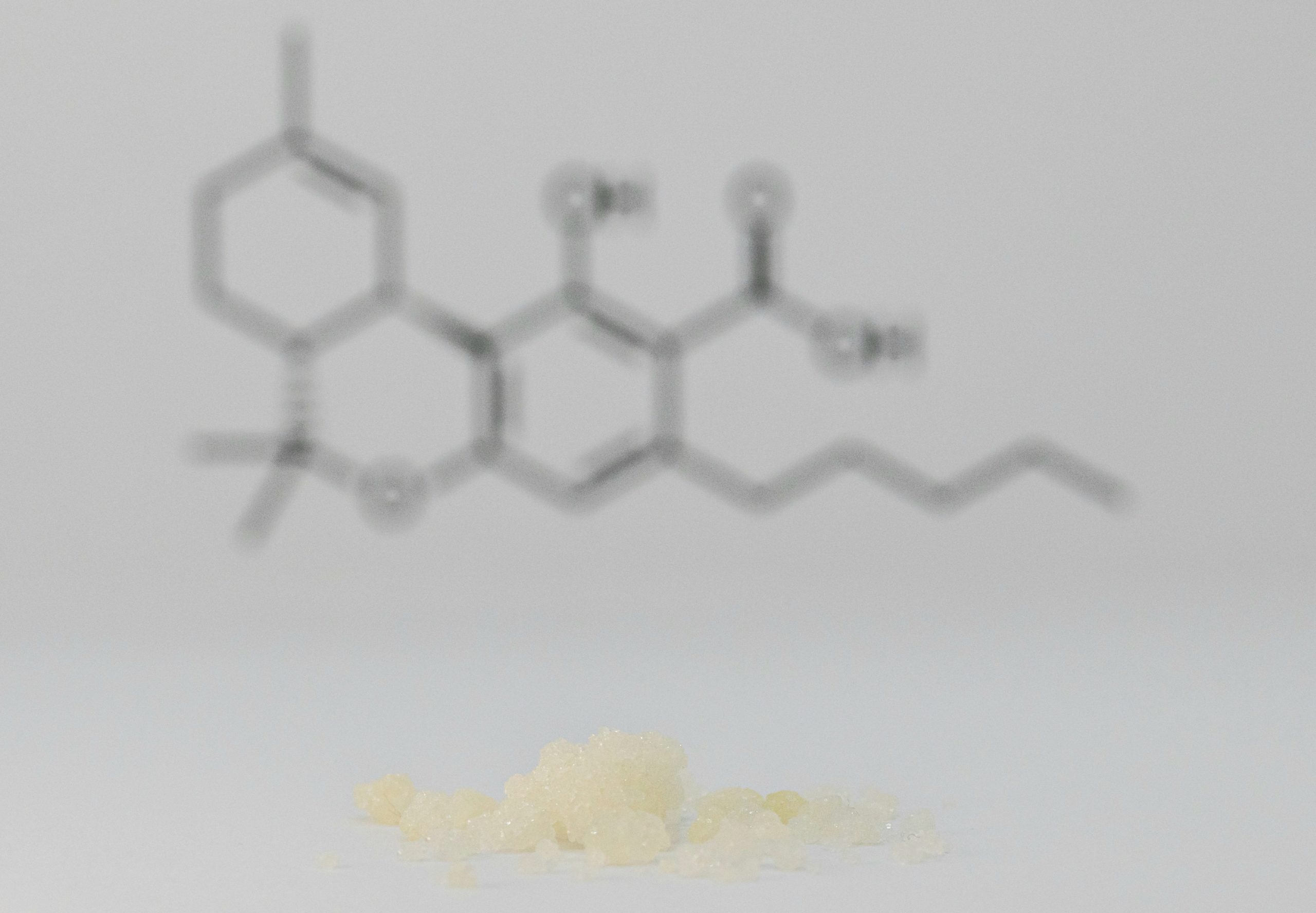
While THC is by far the most famous and well researched cannabinoid due to its psychoactive properties, it wouldn’t exist without it’s progenitor THCA . So what is the difference between THC and THCA and why aren’t there more concrete results on the effects of THCA?
THCA stands for tetrahydrocannabinolic acid and it is the precursor to THC (tetrahydrocannabinol). When cannabis is growing it makes cannabinoids as carboxylic acids that most often convert into non-acidic compounds through a process called decarboxylation. Almost all cannabinoids start off in their acidic form which have differing structures and effects than that of their non-acidic versions.
THCA, although abundant in fresh cannabis, is unstable under controlled storage conditions and when exposed to light and/or heat it readily decarboxylates into THC. In fact, one THCA study found that “THCA decarboxylates even when stored between 4 and 18ºC (39-64ºF) so THC contamination in THCA is nearly unavoidable.” This THC contamination even among pure extracts is what makes lab results based only on THCA so difficult to determine.
THCA is considered non-psychoactive meaning you do not experience a “high” when imbibing it. This is due to the fact that THCA does not bind to CB1 receptors, the receptors that have a high binding affinity for THC. (For more information on receptors and the endocannabinoid system check out our blog post How Marijuana Works in the Body). In fact, THCA research has shown that THCA does not seem to bind much to either of the two major cannabinoid receptors.
We can, however, verify that extracts that are predominantly made up of THCA have been known to have anti-inflammatory and neuroprotective properties. THCA has also been shown to reduce nausea and vomiting.
When smoking cannabis you are decarboxylating it converting the THCA into regular THC. This means that in order to absorb THCA you’ll either need to find a freshly made extract of it or you can ingest raw cannabis. There are several concentrates meant for dabbing that are advertised as being high in THCA but these will convert over time into THC depending on how much light and room temperature heat it is exposed to.
While eating a nug of cannabis is not recommended, grinding fresh bud into something edible is a fine method for intaking THCA without decarboxylating it. Try adding ground bud to a smoothie along with other superfoods like kale or avocado to get the most health benefits from a delicious treat. Some people even juice fresh palm leaves and sugar leaves right after harvest, but make sure your grower isn’t using chemical pesticides if you’re planning this.
For more information on THCA, THC, CBD, and more check out our menu or speak with one of our consultants over the phone or in person.